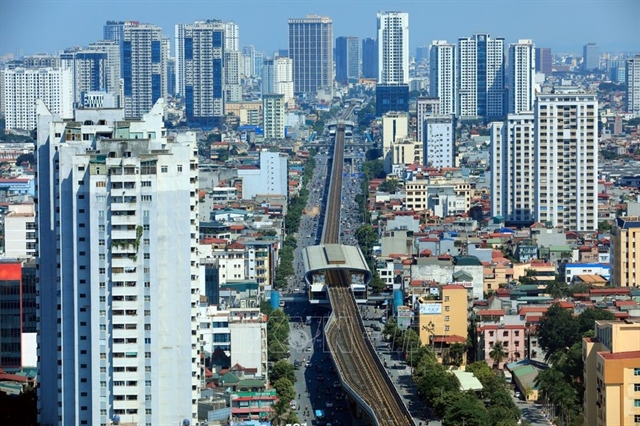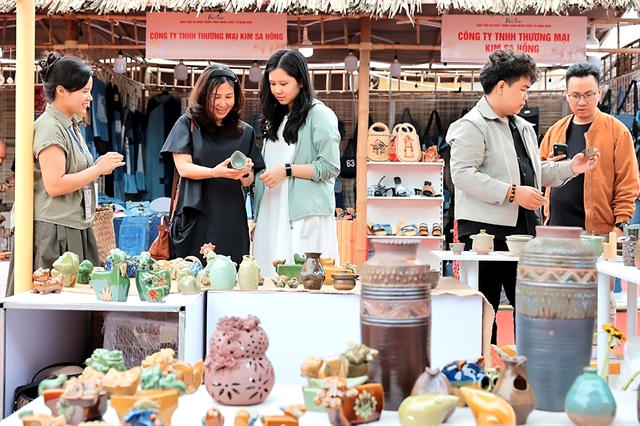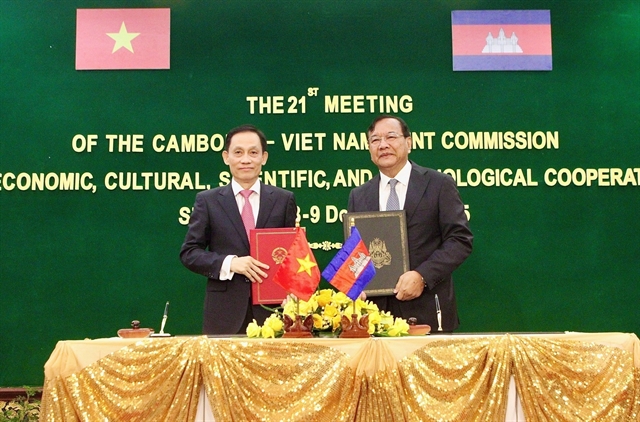 Life & Style
Life & Style

 |
| The 2025 International Craft Village Festival draws large crowds of visitors and tourists. — Photo Lê Đông |
HÀ NỘI — Việt Nam has approved a sweeping national strategy to elevate its cultural and creative sectors – from film and performing arts to gaming, handicrafts and cultural tourism – aiming to boost economic growth, expand exports and solidify the country’s global cultural footprint.
The Strategy for Developing Việt Nam’s Cultural and Creative Industries through 2030, with a long-term vision to 2045, known as Decision 2486, was recently approved by Prime Minister Phạm Minh Chính.
Under Decision 2486, Việt Nam recognises a diverse spectrum of cultural industries, including cinema; fine arts, photography and exhibitions; performing arts; software and entertainment games; advertising; handicrafts; cultural tourism; creative design; broadcasting; and publishing.
These sectors blend culture, creativity, technology and intellectual property to create products that meet people’s growing cultural consumption needs while supporting sustainable development and global integration efforts.
The Government envisions cultural and creative industries becoming key components of the national economy, with strong growth, rising export values and an expanding global presence.
The strategy emphasises the role of entertainment industries in meeting the public’s increasing demand for leisure activities, strengthening community engagement and showcasing Việt Nam’s cultural values to the world.
 |
| A scene from 'Mưa Đỏ' (Red Rain), which earned over VNĐ700 billion (around US$27.5 million) at the box office. — Photo tienphong.vn |
2030 targets
By 2030, the cultural and creative industries are expected to achieve an average annual growth rate of around 10 per cent, contributing 7 per cent to national GDP. The workforce in these sectors is projected to grow by 10 per cent annually, accounting for approximately 6 per cent of the country’s total labour force.
The number of businesses in cultural industries is also anticipated to grow by an average of 10 per cent each year, while export value is targeted to rise 7 per cent annually.
The strategy aims to build modern, well-planned creative hubs, industrial clusters and cultural complexes across the country. These centres will promote distinctive local values, strengthen product branding and form a nationwide network of cultural innovation.
Looking toward 2045, Việt Nam aims for its cultural and creative industries to develop sustainably, contributing 9 per cent of GDP and accounting for 8 per cent of the national workforce.
Digital cultural products are expected to make up more than 80 per cent of industry output, and export value is targeted to grow by 9 per cent annually – positioning Việt Nam among Asia’s leading cultural and entertainment powerhouses.
The strategy stresses regional connectivity, encouraging provinces and major cities with strong cultural assets or existing infrastructure to act as creative hubs for their surrounding areas. It also outlines the need for synchronised development across cultural institutions, transport networks and digital infrastructure.
Encouraging the growth of creative enterprises is another key pillar. The Government aims to foster a professional ecosystem that links creativity, production, business operations, promotion and consumption – all protected by robust intellectual property safeguards.
Building distribution centres and strengthening exports of cultural products to both domestic and global markets are highlighted as core tasks.
From now until 2030, Việt Nam will prioritise domestic consumption and export expansion, particularly targeting overseas Vietnamese communities. By 2045, the goal is to elevate the competitiveness, professionalism, and global recognition of Vietnamese cultural products.
 |
| The Hà Nội Puppetry Festival 2025, held as part of the Thăng Long – Hà Nội Festival, attracts large number of locals and visitors. — Photo Khánh Hòa |
Key sectors
Six key sectors will receive focused development: cinema, performing arts, software and entertainment games, advertising, handicrafts, and cultural tourism. These industries will form value chains that help transform cultural assets into national soft power.
The strategy outlines a comprehensive set of tasks and solutions, including raising public awareness, improving policies and legal frameworks, developing human resources, upgrading infrastructure, attracting investment, promoting digital transformation, expanding markets, strengthening international cooperation and enhancing intellectual property protection.
The Ministry of Culture, Sports and Tourism is tasked with leading the implementation of the strategy, coordinating with ministries, local authorities and relevant organisations to build action plans, improve policy mechanisms, develop national databases, and monitor progress.
The ministry will also conduct periodic reviews every two to five years and propose adjustments when necessary.
The decision further assigns specific responsibilities to ministries, government agencies, provincial authorities, associations and organisations involved in cultural and creative sectors. — VNS




